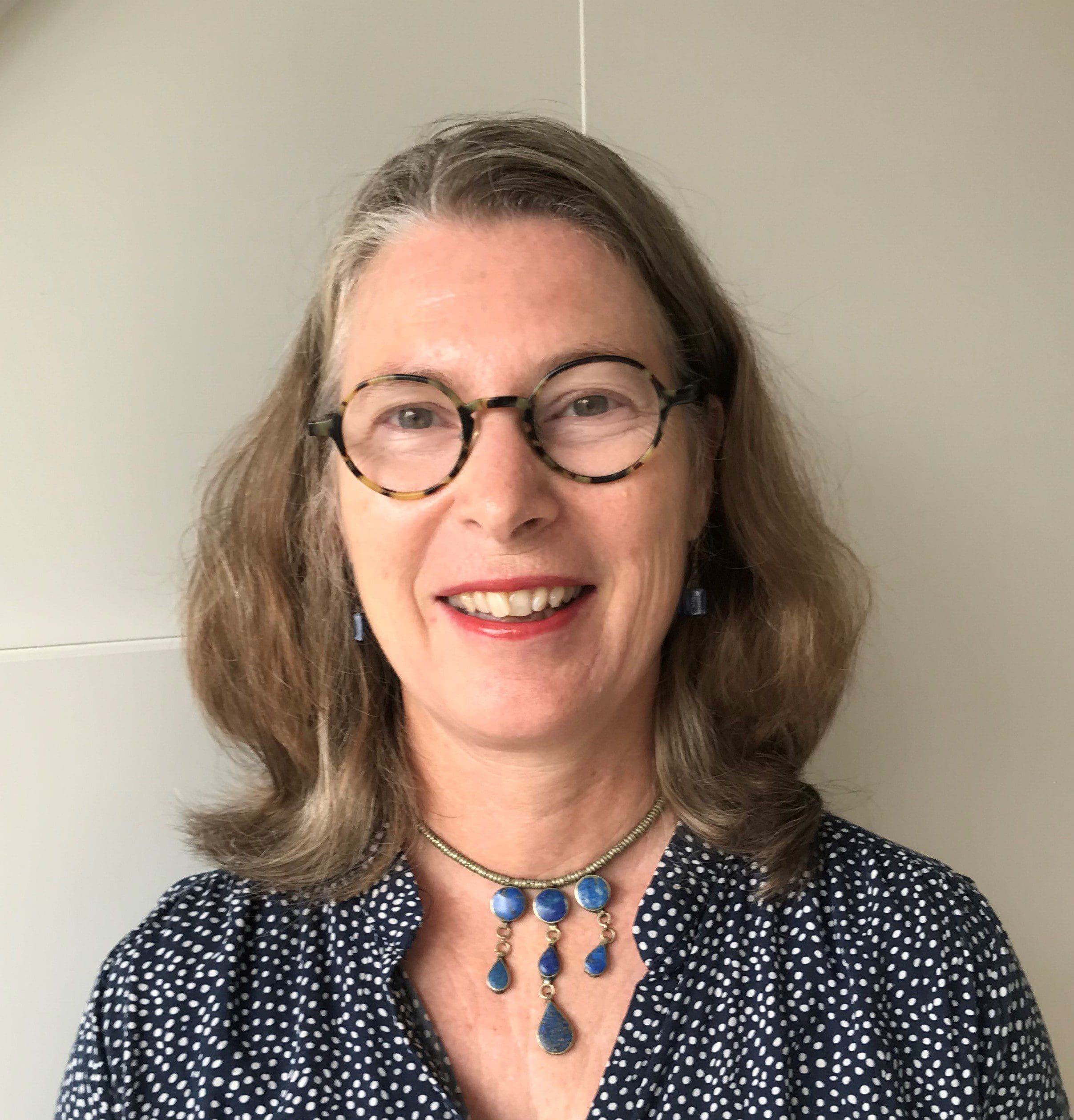
Nino Zchomelidse
Associate Professor
Contact Information
- nzchome1@jhu.edu
- Curriculum Vitae
- Gilman 180
- Spring 2024, Tuesdays 10am-12pm
- 410-516-8857
Research Interests: Medieval art
Education: PhD, University of Bern, Switzerland
With a background in the broadly oriented German and Swiss academic traditions—I received my PhD from the University of Bern and defended my Habilitation at the University of Tübingen—I have pursued a wide range of research interests in medieval art with a geographical focus on Italy, the Eastern Mediterranean and more recently on Germany. I am particularly interested in issues of representation, mimesis, copying and the interactive relationship between art, ritual, and the viewer, the visuality of legal documents, and the investigation of theoretical, historiographical, and political aspects of the medieval art.
My first book (Santa Maria Immacolata in Ceri: Sakrale Malerei im Zeitalter der Gregorianischen Reform, Rome, 1996) provides the first comprehensive study of a key monument of the Gregorian Reform in Rome. I demonstrated the impact of the principles of the Reform Movement for the revival of Early Christian ideals and imagery and for the specific reception of antiquity in twelfth-century Roman painting. For my second book, I turned to the fascinating, often interconnected, artistic landscape of southern Italy defined by its multifaceted relations within the Mediterranean and the lands north of the Alps. Art, Ritual, and Civic Identity in Medieval Southern Italy (Pennstate University Press 2014) investigates the creation, function, and change of the significance of liturgical furnishings and manuscripts in southern Italy (including Sicily). More recently I have been working on a larger project on medieval concepts of authenticity and the visuality of legal documents.
Before joining Johns Hopkins, I taught at the University of Tübingen (Germany) and at Princeton University. I have been awarded numerous fellowships and grants from the Bibliotheca Hertziana, Rome (Max-Planck-Institut), the Carlsberg Foundation, the Center for Advanced Study in the Visual Arts (CASVA), National Gallery of Art, Washington, D.C., the Gerda-Henkel-Foundation, and Institute for Advanced Study, Princeton.
In addition to my research on medieval art—and motivated by the German academic tradition that requires a secondary competence—I have also published on northern German and Danish art in the first half of the 19th century, in particular on aesthetics and science in the academic tradition in Denmark, intellectual and artistic exchange between Rome and Copenhagen, and the role of landscape painting for the construction of "national" identity. For this particular research focus, please see the Research tab and my CV.
My first book (Santa Maria Immacolata in Ceri: Sakrale Malerei im Zeitalter der Gregorianischen Reform (Rome, 1996) provides the first comprehensive analysis of a hitherto unknown key monument of the Gregorian Reform in Rome and its hinterland. Based on the material evidence of the frescoes themselves, their stylistic, iconographic, and socio-political context, I demonstrate the impact of the principles of the Reform Movement for the revival of Early Christian ideals and imagery and for the specific reception of antiquity in twelfth-century Rome. The juxtaposition of an anthropomorphic representation of the Old Testament god with an image theoretical inscription at Ceri initiated one of the primary intellectual curiosities that drive my research: the impact of medieval image theory on the representation of the “invisible God”. Thus, in several articles and a co-edited volume (Die Sichtbarkeit des Unsichtbaren: Zur Korrelation von Text und Bild im Wirkungskreis der Bibel, with Bernd Janowski (Stuttgart, 2003), I investigate medieval concepts of representation and vision both in relationship to the frescoes in Ceri and more broadly.
My second book Art, Ritual, and Civic Identity in Medieval Southern Italy (Pennstate University Press 2014) investigates the creation, function, and change of the significance of stunningly beautiful and complex liturgical furnishings and richly illuminated manuscripts in southern Italy (including Sicily). This book spans a wide time period, setting the stage with an analysis of the Late Antique development of liturgical practices and furniture in the West as well as in the Eastern Mediterranean including Syria and Asia Minor, and ends in the fourteenth century. My approach concerns primarily the conceptual dimensions of these artworks, investigating the different modes of interaction that occur between church furnishings, images, and ritual movement. I engage with the recent methodological discourses in art history, most importantly with regard to the performative aspects of works of art and their reception, but also about issues of movement, narrativity, and processes of decoding. Connected with this interest in ritual and art is a more recent article on the creation of sacred space in the Middle Ages that investigates material, ritual, and sensorial strategies (2020).
My current book project on Authenticity and the Visuality of Medieval Legal Documents stems from a cluster of articles that include “Liminal phenomena. Framing medieval cult images with relics and words,” Viator. Medieval and Renaissance Studies 47/3 (2016), and “The Aura of the Numinous and Its Reproduction: Medieval Paintings of the Savior in Rome and Latium,” Memoirs of the American Academy in Rome 55 (2010). Here I raised questions that developed from my interest in medieval attitudes toward images of cult and devotion: Which strategies—visual and other—were developed for creating images of the Christian god and the saints that would be acceptable for veneration? Can we discern a general theoretical discourse about truth that finds its visual expression in the production of medieval works of art? What establishes the authenticity of an image that is designed for cult and devotion, and how does knowledge about an image’s maker relate to its perception as authentic? A substantial article (14,881 words) on the “Aesthetics of Illusion and Authenticity in Ottonian Legal Documents” is currently under review.
In addition to my research on medieval art and motivated by the German academic tradition that requires a secondary competence, I have published on the intersection between natural philosophy and science and the fine arts in 19th-century Germany and Denmark. In particular, I have focused on the role of the natural philosopher H.C. Ørsted for the education and formation of the artists at the Royal Danish Academy of Fine Arts in Copenhagen. A co-edited volume Fictions of Isolation: Artistic and Intellectual Exchange in Rome during the First Half of the Nineteenth Century, with Lorenz Enderlein (Rome, 2006), investigates the intellectual background of the artistic and theoretical discourses in Rome in the first half of the 19th century is part of this broader interest in 19th-century art. I find that embarking on an entirely new and different field has proved immensely beneficial for my intellectual journey as a medievalist and art historian.
The centrality of the issues of representation and authenticity in my own research as well as within the current discourse in medieval art history, has led me to develop a number of courses, in particular two graduate-level seminars, AS.010.652.01“Medieval Images of Visionary Experiences” and “The Medieval Image and Concepts of Authenticity. More recently I taught a seminar closely connected to my current book project: AS.010.459 /AS.010.671 “The Illuminated Charter: Visual Splendor, Performance, and Authenticity of Medieval Legal Documents. Stemming from my research in on medieval southern Italy is a course on the graduate level about the intersection of medieval art and science, given the close connection of this region with the Byzantine Empire and the Islamic World across the Mediterranean AS.010.601.01 “Art and Knowledge in Medieval Southern Italy”. I also designed a seminar on the fascinating landscape of medieval art and architecture of Georgia AS.010.646 “Art and Architecture at the Eastern ‘Frontier’: Medieval Georgia.” Its specific geographic position in the South Caucasus, at the cross roads between the Christian and Islamic Worlds, had a profound impact on the art and architecture. A fully funded field trip to Georgia that had to be cancelled because of the pandemic in 2020.
My 300-level course AS.010.360.01 “Medieval Art in Europe: Methodology, Historiography, Theory” addresses theoretical, methodological, and historiographical aspects of art history more generally, but with a material and historical focus on the medieval period. My interest in the significance of art and architecture in the broader scheme of political and religious history has led me to design a 300-level course, AS.010.319.01 “Medieval Art and Architecture of the Holy Land”. Departing from the fact that all three monotheistic religions have since the early Middle Ages claimed the same territories, this course aims to show that the creation of holy sites, their accessibility, and many transformations in the Middle Ages depended on the political and religious changes and were intricately connected with the making of art and architecture. I teach a course on medieval Rome both as a lecture course (AS.010.303.01) and seminar (AS.010.431/ 639.01 “Transformations of an Empire: Power, Religion, and the Arts of Medieval Rome.” This class investigates the impact of the economical ups and downs in the eternal city’s medieval period, and addresses ideas and concepts behind different forms of leadership, both political and religious, as they intersect with the power of the arts and the self-referential character of a city that is obsessed with its own past.
I regularly arrange specific class meetings in the Eisenhower Library Rare Books seminar room, and teach my medieval manuscript course entirely with material from the collection’s facsimile editions of illuminated medieval manuscripts. Additionally, I teach sections of my courses in the study room and regular exhibition spaces of the Walters Art Museum and have also taken students on field trips outside Baltimore, for example the Cloisters (Metropolitan Museum, New York City), and Dumbarton Oaks (Washington, DC)
Books (single authored)
- Art, Ritual, and Civic Identity in Medieval Southern Italy (University Park: Pennstate University Press, 2014)
- Santa Maria Immacolata in Ceri: Sakrale Malerei im Zeitalter der Gregorianischen Reform (Rome: Archivio Guido Izzi, 1996), Storia e Arte 5 (Italian and German)
Books (co-edited)
- Meaning in Motion. The Semantics of Movement in Medieval Art, co-edited with Giovanni Freni, (Princeton: Princeton University Press, 2011)
- Fictions of Isolation: Artistic and Intellectual Exchange in Rome during the First Half of the Nineteenth Century, co-edited with Lorenz Enderlein, Supplementum Analecta Romana Instituti Danici 37 (Rome: L’Erma di Bretschneider, 2006)
- Die Sichtbarkeit des Unsichtbaren: Zur Korrelation von Text und Bild im Wirkungskreis der Bibel, co-edited with Bernd Janowski (Stuttgart: Deutsche Bibelgesellschaft, 2003)
Articles (selection)
-
“The Exultet Roll in the Beneventan Zone,” in the Brill Companion to the Beneventan Zone, ed. by Andrew J.M. Irving e Richard Gyug, Brill, scheduled for publication 2023 as printed volume and ebook
-
“Wrapped in Silk and Written in Stone. Aesthetics of illusion and authenticity in Ottonian legal documents,” submitted on 7/25/2023
-
"Creating Sacred Space in the Middle Ages: Material, ritual, and sensorial strategies, “in Domus sapienter staurata”. Scritti di storia dell’arte per Marina Righetti, eds. Anna Maria D’Achille, Antonio Iacobini, Milan: Silvana Edioriale, 2020, 664-681
-
“Committenza laica nel Duomo di Ravello: Il pulpito Rufolo”, in L'apogeo di Ravello nel Mediterraneo. Cultura e patronato artistico di una élite medievale, ed. by Francesco Gangemi, Manuela Gianandrea e Pio Pistilli, (Rome: Campisano 2019), 243-258
-
“Liminal phenomena. Framing medieval cult images with relics and words,” Viator. Medieval and Renaissance Studies 47/3 (2016), 1-56
-
“The Epiphany of the logos in the Ambo in the Rotunda (Hagios Georgios) in Thessaloniki,” in: Synergies in Visual Culture / Bildkulturen im Dialog, ed. by Manuela De Giorgi, Annette Hoffmann, Nicola Suthor (Munich: Fink Verlag, 2013), 85-96
- “Descending Word and Resurrecting Christ: Moving Images in Illuminated Liturgical Scrolls of Southern Italy,” in: Meaning in Motion. The Semantics of Movement in Medieval Art, eds. N. Zchomelidse and G. Freni, (Princeton: Department of Art and Archaeology in association with Princeton University Press, 2011), 3-34
- “The Aura of the Numinous and Its Reproduction: Medieval Paintings of the Savior in Rome and Latium,” Memoirs of the American Academy in Rome 55 (2010), 221-262
- “Deus - Homo – Imago: Representing the Divine in the Twelfth Century,” in Looking Beyond. Visions, Dreams and Insights in Medieval Art and History, ed. Colum Hourihane (Princeton: Department of Art and Archaeology and Penn State University Press, 2010), 107-127
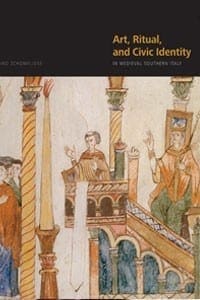
Art, Ritual, and Civic Identity in Medieval Southern Italy
author
Pennstate University Press ,
2014
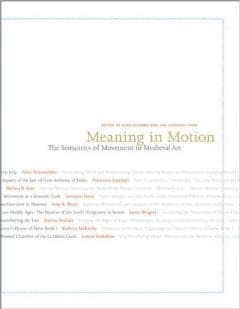
Meaning in Motion: The Semantics of Movement in Medieval Art
co-editor
Princeton University Press ,
2011
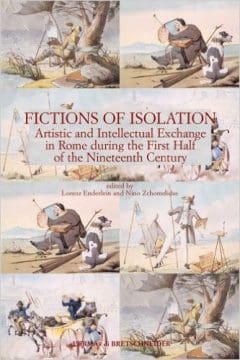
Fictions of Isolation: Artistic and Intellectual Exchange in Rome During the First Half of the 19th Century
co-editor
L'Erma di Bretschneider ,
2006
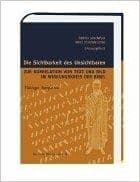
Die Sichtbarkeit des Unsichtbaren: Zur Korrelation von Text und Bild im Wirkungskreis der Bibel
co-editor
Deutsche Bibelgesellschaft ,
2002
